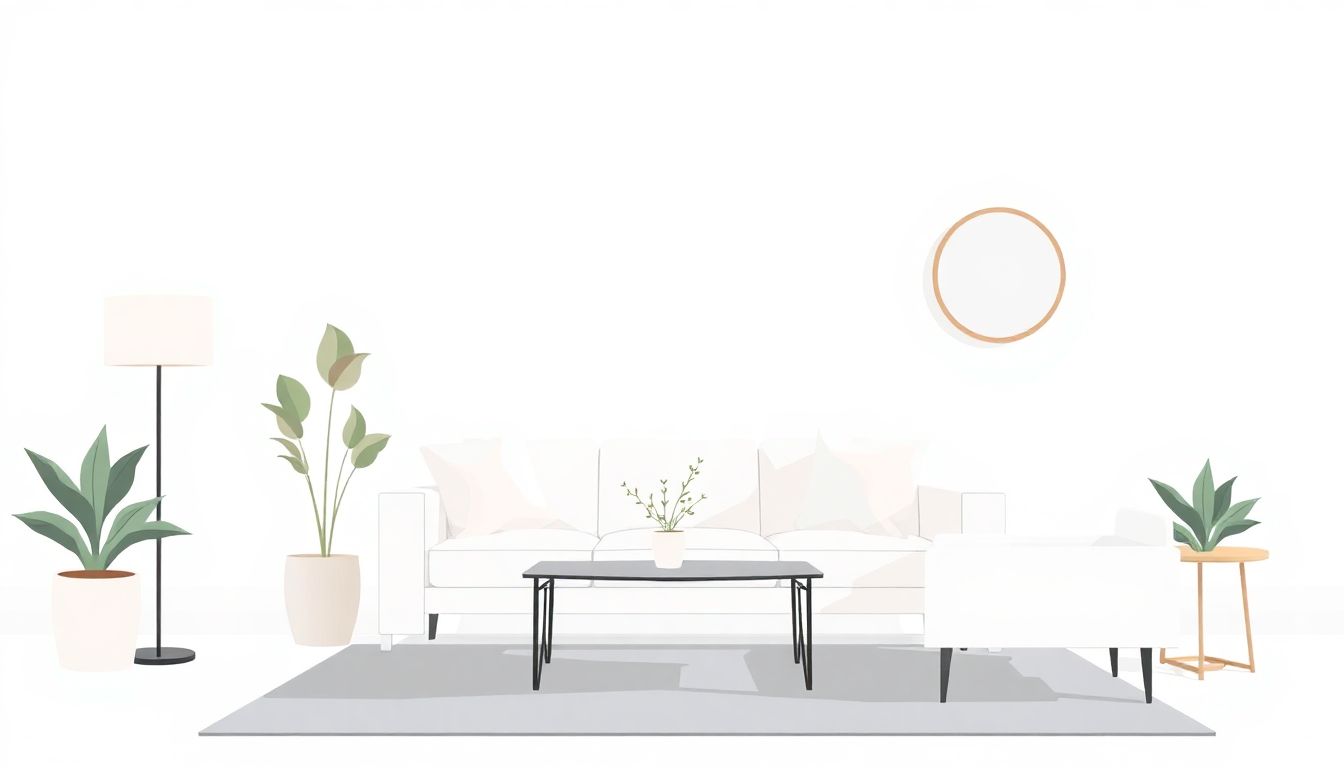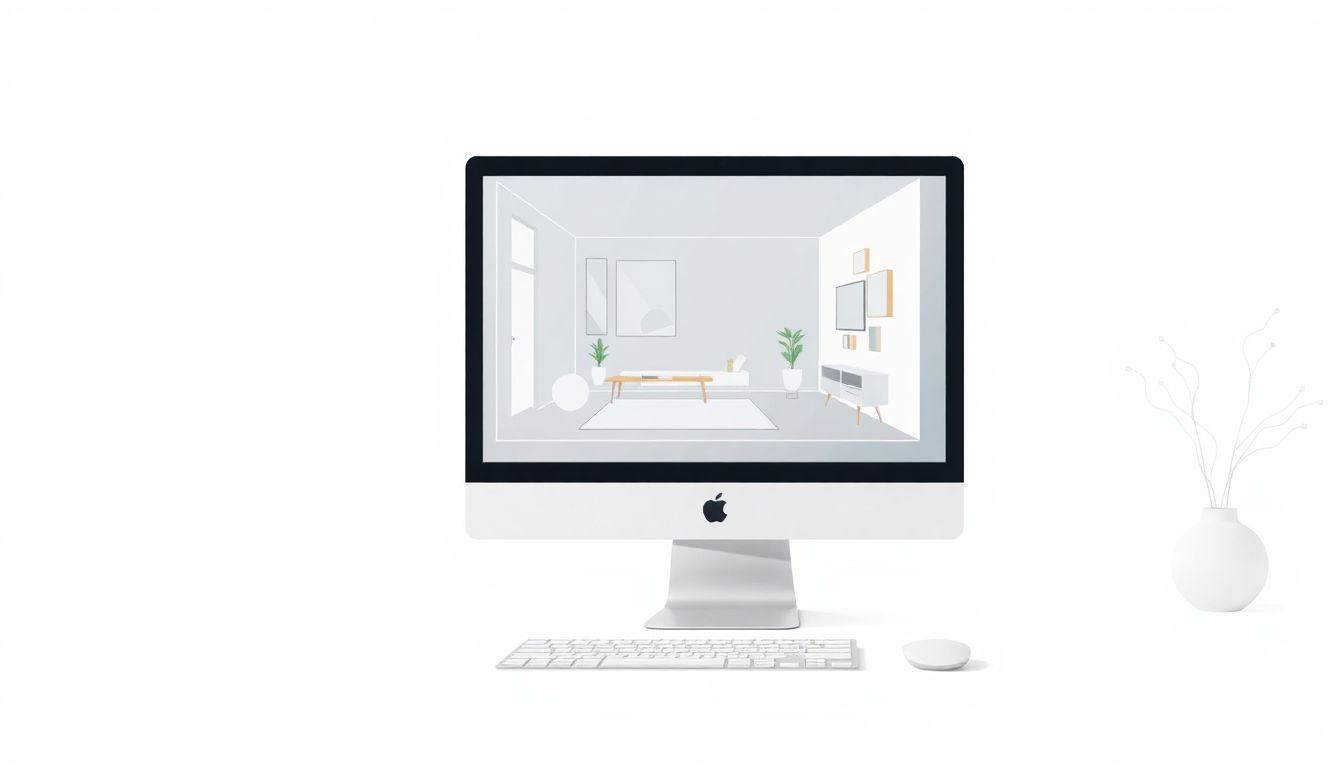Looking for an easy way to design beautiful interiors with just a few clicks? I get it—sometimes traditional tools can be overwhelming or expensive. Keep reading, and I’ll show you how AI interior design generators can make your space look stunning without the hassle. If you want a quick guide to picking the best tools in 2025, I have that covered too. Let’s make your dream space a reality!
Key Takeaways
Key Takeaways
- AI interior design generators create quick, custom room layouts and styles based on user input, making design easier and faster.
- Using AI tools helps design professionals save time, present more options, and satisfy clients with modern visuals.
- Look for AI tools that are simple to use, offer lots of style choices, produce realistic images, and keep your data secure.
- Market growth shows AI for interior design is becoming more popular and affordable, with major companies investing heavily in the tech.
- In 2025, trends include generative AI creating multiple design ideas, AR/VR walkthroughs, and AI helping with project management and personalized recommendations.
- Choosing the right AI tool depends on your needs—consider ease of use, customization, security, and price. Testing demos and reading reviews helps.
- Prepare clear descriptions and experiment with prompts for better results. Show clients several AI-generated options to get their feedback.
- Explore online marketplaces and forums to find the latest AI tools, compare features, and stay updated on new developments in interior design tech.

What Exactly Is an AI Interior Design Generator and How Does It Work?
An AI interior design generator is a tool that creates design ideas automatically, based on your input like style preferences, room descriptions, or even photos. Basically, it acts like a virtual designer that offers quick, tailored concepts without hours of brainstorming.
These tools use machine learning and deep learning algorithms to analyze a vast amount of data—from current trends to spatial constraints—and then generate visualized room layouts, color schemes, and furniture arrangements.
Most popular generators in 2025 work through simple interfaces where you enter your details or upload images, and the AI delivers multiple design options in minutes. For example, sellaitool.com hosts a marketplace where you can find top AI tools for interior design, perfect for entrepreneurs wanting to integrate AI into their services.
Why Should Your Business Jump on the AI Interior Design Bandwagon?
If you’re in the interior design world or running a business related to home decor, using an AI interior design generator can save tons of time and boost client satisfaction. It helps you generate ideas faster, offer more options, and impress clients with modern solutions.
Industry experts expect 72% of design studios to rely on AI for complex space planning by 2025, so missing out could mean falling behind.
Plus, AI tools can handle repetitive tasks, freeing your team to focus on personalized touches or high-end projects. And if you’re looking to sell AI-powered interior design solutions yourself, platforms like sellaitool.com make it easy to reach buyers actively seeking such tools.
Top Features to Consider When Choosing an AI Interior Design Generator
Not all AI tools are created equal, so here’s what to look for:
- Ease of Use: User-friendly interfaces make your workflow smoother, especially if you plan to use it regularly or with clients.
- Customization Options: Check if the tool allows you to tweak styles, color palettes, or layout preferences easily.
- Design Diversity: Look for generators that offer multiple styles—modern, rustic, minimalistic—so you can suit any client’s taste.
- Image Quality and Realism: High-res, realistic renderings save time and make client presentations more convincing.
- Data Security: If you’re selling or sharing your designs, choose platforms that prioritize privacy and secure transactions, like sellaitool.com.
In 2025, the best AI interior design tools combine these features with affordability and integration capabilities, ensuring you get both creativity and efficiency in one package.

Market Growth and Industry Outlook
The global market for AI applied to interior design hit over $1.09 billion in 2024, making it clear that AI is here to stay.
With a projected growth rate of over 27% in 2025, the industry is expected to reach around $3.59 billion by 2029.
This rapid expansion is driven by advances in machine learning, deep learning, and faster processors that allow AI to analyze large datasets—think user preferences, design trends, and spatial limitations—more efficiently than ever before.
It’s no surprise that major companies like Autodesk, Houzz, and Morpholio are already investing heavily in AI tools to stay competitive, while newcomers are carving out their niches.
Experts expect the AI interior design market to grow from USD 829 million in 2023 to roughly USD 7,299 million by 2033, with a compound annual growth rate (CAGR) around 24.3%.
This means AI-powered design tools are becoming more accessible and affordable for small studios and even individual designers.
Key Industry Players and Their Offerings
Leading AI interior design tools are developed by big names like Autodesk, Houzz, and Cedreo.
These companies compete on the sophistication of their algorithms, ease of use, and the ability to integrate with existing design software.
For example, IKEA’s Home Planner offers AI-powered room visualization, combining affordability with good functionality.
Meanwhile, startups like DreamHouse AI are offering specialized features like over 35 styles and charge as low as $0.05 per rendering, appealing to homeowners and real estate agents alike.
It’s worth keeping an eye on these brands, as their offerings continue to evolve quickly, driven by market demand and technological advancements.
Trends That Are Shaping AI Interior Design in 2025
One major trend is the rising use of generative AI models that can create multiple design concepts from simple inputs, saving hours of manual work.
Another is the integration of AR and VR to allow clients to walk through their future spaces virtually, enhancing decision-making.
Expect to see more personalized recommendations thanks to AI analyzing individual style preferences, budgets, and spatial constraints more accurately.
The market’s growth also encourages the development of more user-friendly platforms, making sophisticated design processes accessible to non-professionals.
Finally, the expansion of AI assistants for project management helps studios streamline workflows, improve collaboration, and deliver results faster than ever before.
How to Pick the Right Tool for Your Needs
Start by asking yourself what’s most important—ease of use, customization, or price—and then choose accordingly.
If you’re new to AI design, look for platforms with intuitive interfaces like Spacely AI or Planner5D.
For more custom control, try tools that let you tweak everything manually or upload your own style preferences—like RoomGPT.
Security is also key if you plan to sell designs or work with client data—platforms such as sellaitool.com emphasize privacy safeguards.
And don’t forget to check out reviews or ask for demos so you can see how well each tool matches your workflow.
Tips to Get the Best Results from AI Interior Design Generators
First, take the time to prepare your input—clear descriptions, preferred styles, and specific measurements can make a big difference.
Experiment with different prompts and tweak parameters to see how the AI responds; don’t just settle for the first output.
If you’re working with clients, show them a variety of options generated by the AI to give them choices and foster collaboration.
Use high-quality images or mood boards to help guide the AI toward your desired aesthetic.
Finally, review and refine the AI’s suggestions—treat them as starting points rather than final products—to add your personal touch.
Best Places to Find AI Interior Design Tools and Marketplaces
Besides mainstream software, many online marketplaces like sellaitool.com offer curated lists of top AI tools for interior design.
Platforms such as Envato Elements and CGTrader sometimes feature AI-generated design assets you can incorporate into your projects.
Joining industry-specific forums or online communities also helps you stay updated on emerging tools—Reddit’s r/interiordesign or LinkedIn groups are good starting points.
And be sure to subscribe to newsletters from companies like Autodesk and Houzz for the latest AI product announcements.
Marketplaces are also a great way to compare features and prices before committing to a specific tool.
FAQs
Focus on features like customization options, user-friendliness, compatibility with your devices, and the variety of design styles available. Also, consider the tool’s ability to generate realistic visualizations and its integration with other design software.
Using an AI interior design tool can speed up project workflows, reduce costs, and offer clients quick, realistic visual ideas. It enhances creativity and helps deliver designs that meet client expectations efficiently.
Consider your project requirements, budget, ease of use, variety of design options, and compatibility with existing tools. Testing different platforms can also help determine which one best fits your workflow and style preferences.
Top tools are available on specialized marketplaces, official websites, and app stores. Popular options include platforms like Canva, Spacely AI, and RoomGPT, which are frequently updated and offer comprehensive features for different needs.